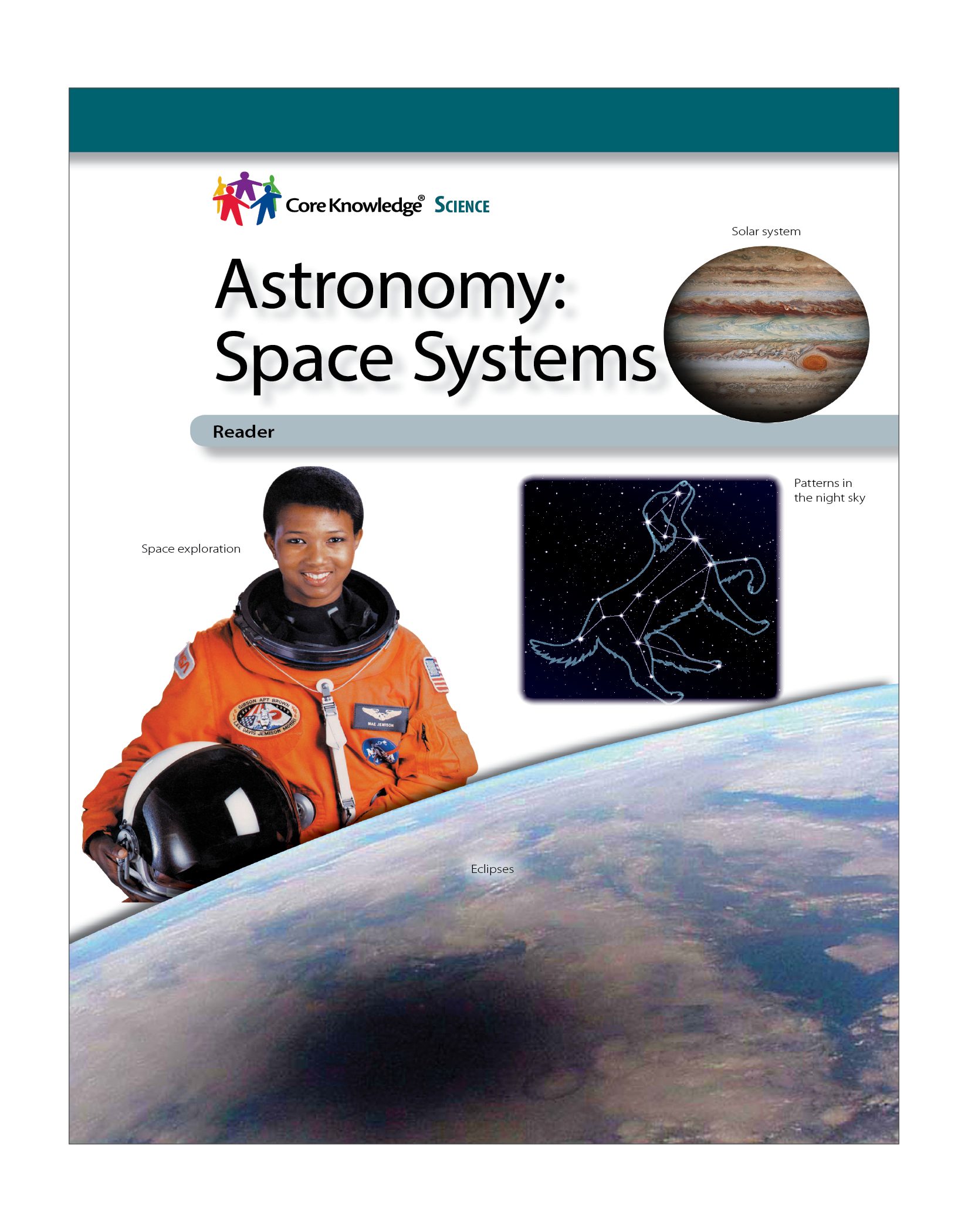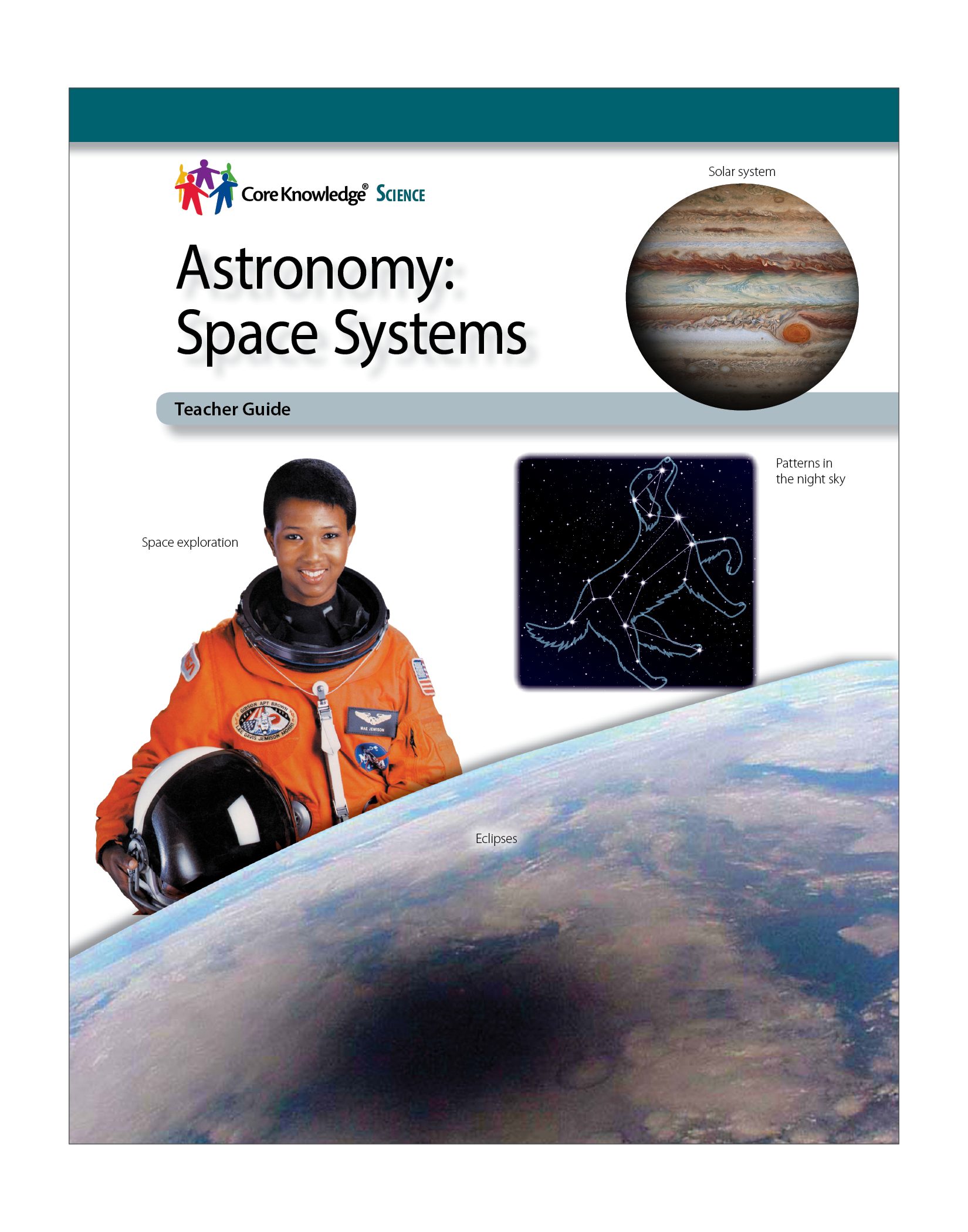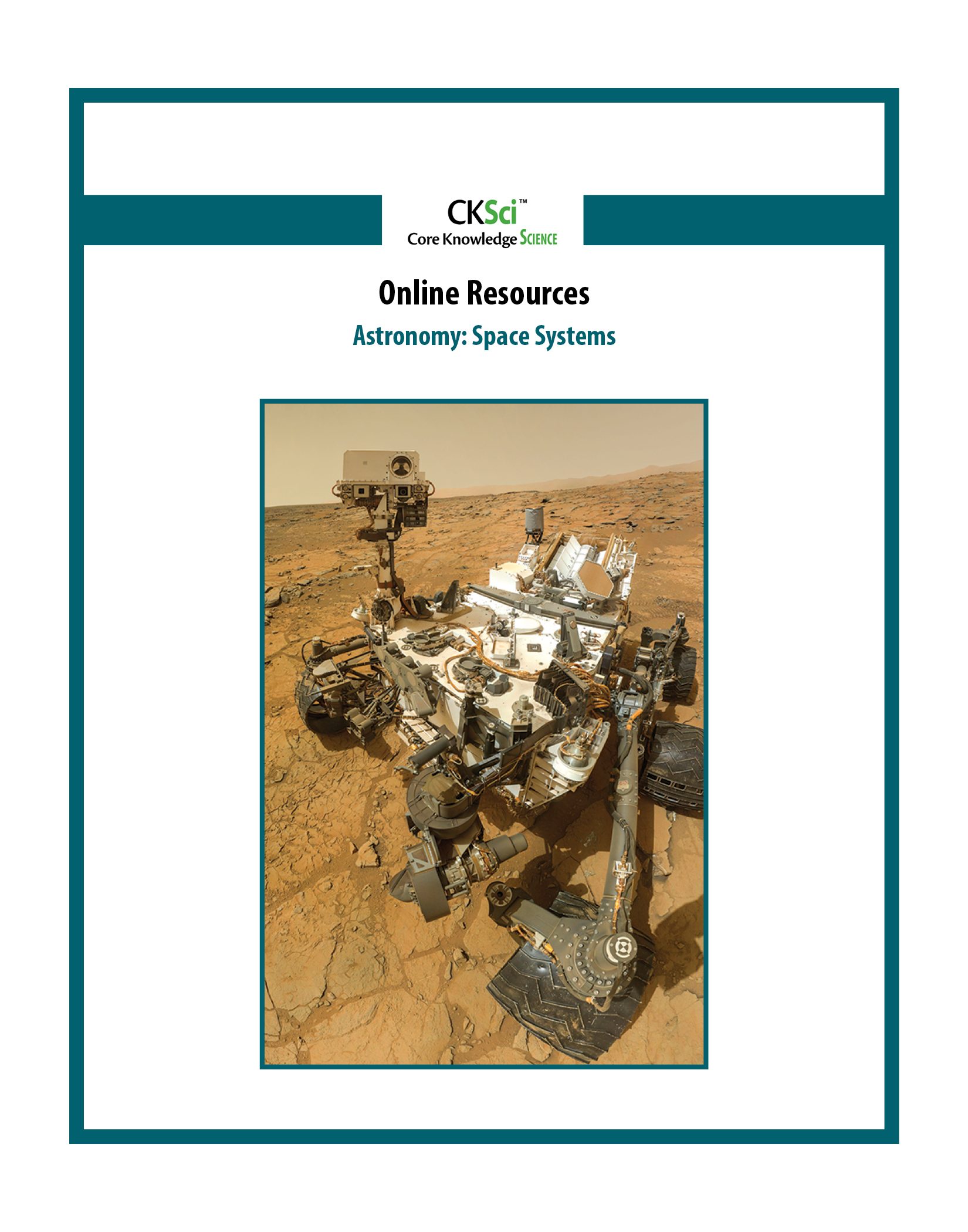
CKSci Unit 5: Astronomy: Space Systems
Focus:
Students will learn about Earth, our solar system, our galaxy the Milky Way, and our place in the universe. They will focus on a big vision: that we are part of a large solar system, which lies within an even larger galaxy that is but one of many millions of galaxies in the universe.
Students will examine the sun and the planets of our solar system. The sun is the closest of all stars to Earth and seems to be the brightest star, but that is because it is the closest to us. Students use this knowledge to understand apparent and absolute brightness.
Students also focus on
- the shape and motion of Earth,
- the Earth’s axis, its tilt, and its rotation around the sun, and
- terrestrial, gas, and ice planets.
Additionally, students get a chance to learn about the various ways that humans have studied space. The consider engineering design and its contribution to space exploration. Finally, students focus on women who have gone into space, and women whose contributions have made space travel possible.
Number of Lessons: 14
Instruction Time:
- Each Lesson is designed to be completed in one 30–45-minute class period. Some lessons may take more than one class period.
- Some single-day activities and performance tasks might require setting aside a longer block of time.
- This Unit should be completed in 18 classroom days.
- A Pacing Guide is provided within the Teacher Guide.
- A complete list of Materials needed to complete the unit is provided in Online Resources.
Additional Search Terms:
galaxy • solar system • universe • orbit • Earth’s axis • lunar eclipse • solar eclipse • moon phase • apparent brightness • absolute brightness • light-year • star • gravity • tides • space exploration • nonfiction • informational text



